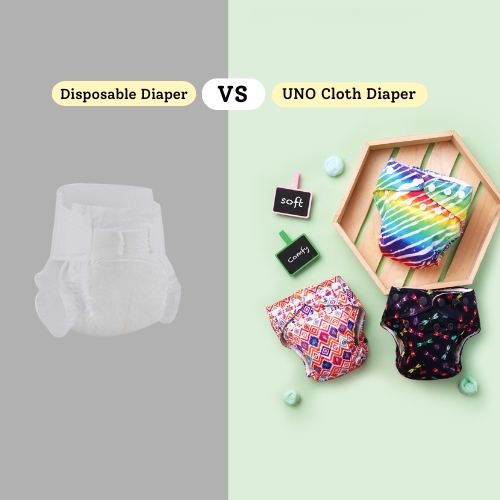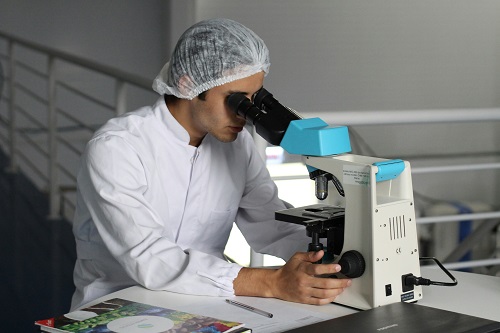Welcoming a newborn is one of life’s most joyful experiences. Along with the snuggles, feeding routines, and sleepless nights comes one unavoidable task – diapering. Choosing the right diaper for newborn babies is a decision every parent faces early on. The two most common options are cloth diapers and disposable diapers, and each comes with its own set of pros and cons.
In this blog, we’ll help you make an informed choice by comparing cloth diapers vs disposable diapers for newborns, covering everything from comfort and cost to environmental impact and skin health.
Understanding the Basics: Cloth vs Disposable Diapers
Cloth Diapers
Cloth diapers, like those from SuperBottoms, are made from natural, breathable fabrics. Modern cloth diapers are leak-proof, adjustable, and easy to use – a far cry from the old-school pins and folds. They’re washable and reusable, making them an eco-friendly and economical choice for parents.
Disposable Diapers
These are single-use diapers made of plastic, synthetic materials, and absorbent chemicals. While convenient and widely available, they come at a recurring cost and are not biodegradable.
Comfort and Skin Health for Newborns
Newborn babies have delicate skin, which makes choosing the right diaper crucial. Cloth diapers are generally considered safer for newborn skin as they are free from harmful chemicals, fragrances, and dyes. Brands like SuperBottoms use 100% organic cotton and safe fabrics that allow the skin to breathe.
On the other hand, disposable diapers often contain chemicals like sodium polyacrylate, which can cause rashes or irritation in sensitive babies. Though many brands now offer hypoallergenic options, cloth diapers remain a top choice among pediatricians and eco-conscious parents for newborn baby diapers.
Cost Comparison: Long-Term Savings with Cloth Diapers
Let’s face it—raising a baby isn’t cheap. Diapers take up a significant chunk of a newborn’s monthly expenses. On average, a baby uses 8–12 diapers a day in the first few months.
With disposable diapers, that translates to over 300 diapers a month, costing ₹2,500–₹3,500. Over two years, that adds up to more than ₹60,000!
In contrast, cloth diapers are a one-time investment. A complete cloth diaper stash from SuperBottoms may cost ₹8,000–₹12,000, but it can last through the baby’s entire diapering journey—and even be reused for the next baby.
Environmental Impact: Cloth Diapers for a Cleaner Planet
One of the biggest reasons parents are shifting toward cloth baby diapers is the environmental footprint of disposables. It’s estimated that a single disposable diaper takes 500+ years to decompose. A baby may use more than 6,000 disposable diapers before potty training—that’s a massive contribution to landfill waste.
Cloth diapers are washable and reusable, significantly reducing household waste. Even when considering water usage for washing, the long-term environmental benefits of cloth diapers far outweigh those of disposables.
Convenience & Usage: Are Cloth Diapers Difficult to Use?
Modern cloth diapers are incredibly user-friendly. SuperBottoms UNO cloth diapers, for instance, come with easy snap buttons, adjustable sizing, and high absorbency. They are just as convenient as disposables—only with the added benefit of being eco-conscious and skin-safe.
That said, disposable diapers are undeniably more convenient for travel or emergency situations when you can’t access washing facilities. But with a little planning, even newborn diapers made of cloth can be used effectively while on the go.
Night-Time Diapering: Which One Performs Better?
One concern many parents have is overnight diapering. Disposable diapers are often marketed as more absorbent, but modern cloth diapers are quickly catching up.
SuperBottoms UNO cloth diapers, for example, can last 8–12 hours with the right booster pads, making them suitable for night-time use. They offer the same dryness and comfort without compromising on safety.
Diaper Rash: How Each Option Affects Baby’s Skin
Diaper rash is a common issue among newborns. One major cause of rashes is moisture being trapped against the skin for too long.
While disposable diapers absorb moisture efficiently, they also contain chemicals that can irritate sensitive skin. Cloth diapers are more breathable and chemical-free, reducing the chances of rash. SuperBottoms also offers organic diaper rash creams and liners for extra protection.
Washing & Maintenance: Is It Too Much Work?
A common myth is that cloth diapers are hard to maintain. In reality, it’s quite manageable with a routine.
SuperBottoms provides detailed wash instructions and even offers a Free Diaper Free Trial program for parents to try it themselves. You simply rinse, wash with baby-safe detergent, and sun-dry. It takes a bit of getting used to, but the long-term benefits make it worthwhile.
When to Start Using Cloth Diapers for Newborns?
Parents often wonder when it’s safe to begin using cloth diapers. The answer is—right from day one!
SuperBottoms makes special newborn baby diapers that fit babies from 2.5 kg onwards. These are designed to accommodate the baby’s umbilical stump and are gentle enough for the first few weeks.
The Verdict: Which Diaper Is Better for Your Newborn?
There is no one-size-fits-all answer. Each family has different needs and priorities. If convenience and zero laundry work are your top concerns, disposable diapers might suit your lifestyle. However, if you’re looking for a cost-effective, eco-friendly, and gentler option for your baby, cloth diapers are the better choice.
Here’s a quick recap:
Skin-friendliness
- Cloth Diapers (SuperBottoms): Highly skin-friendly with no chemicals.
- Disposable Diapers: May contain chemicals, gels, and fragrances that can irritate sensitive skin.
Cost Over 2 Years
- Cloth Diapers: One-time investment of ₹8,000–₹12,000.
- Disposable Diapers: Recurring expense totaling ₹60,000+ over two years.
Environmental Impact
- Cloth Diapers: Reusable and low waste; eco-friendly.
- Diapers: Contribute heavily to landfill; not biodegradable.
Overnight Absorbency
- Cloth Diapers: Effective overnight use with additional boosters.
- Disposable Diapers: Good overnight absorbency, but at the cost of chemicals.
Maintenance
- Cloth Diapers: Requires regular washing and drying.
- Disposable Diapers: No maintenance; simply use and throw.
Final Thoughts
Your baby’s comfort, your budget, and the planet’s health—cloth diapers check all the boxes. Whether you’re a first-time parent or exploring sustainable baby care options, SuperBottoms offers safe, soft, and super-absorbent baby diapers tailored for your little one.
Still unsure? Try the SuperBottoms UNO Newborn Diaper and see the difference yourself. A better choice for your baby—and the earth—starts today.




